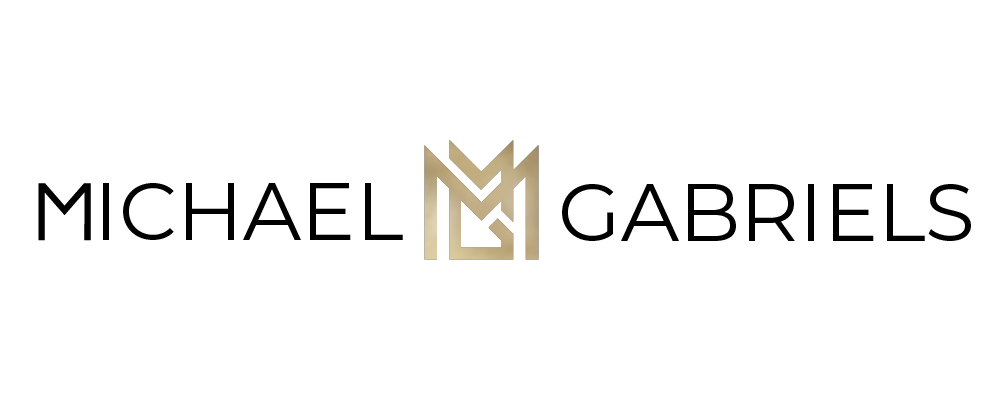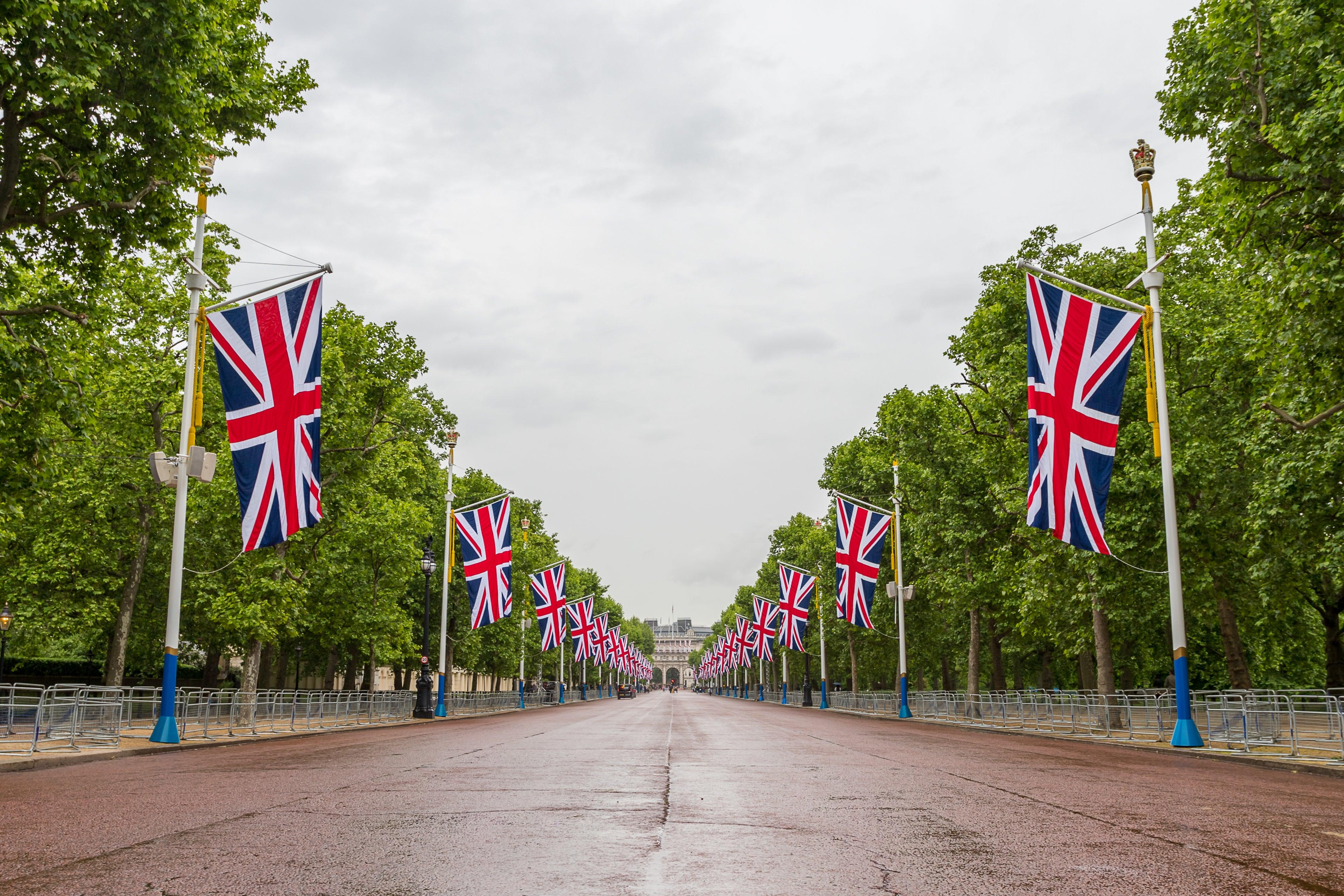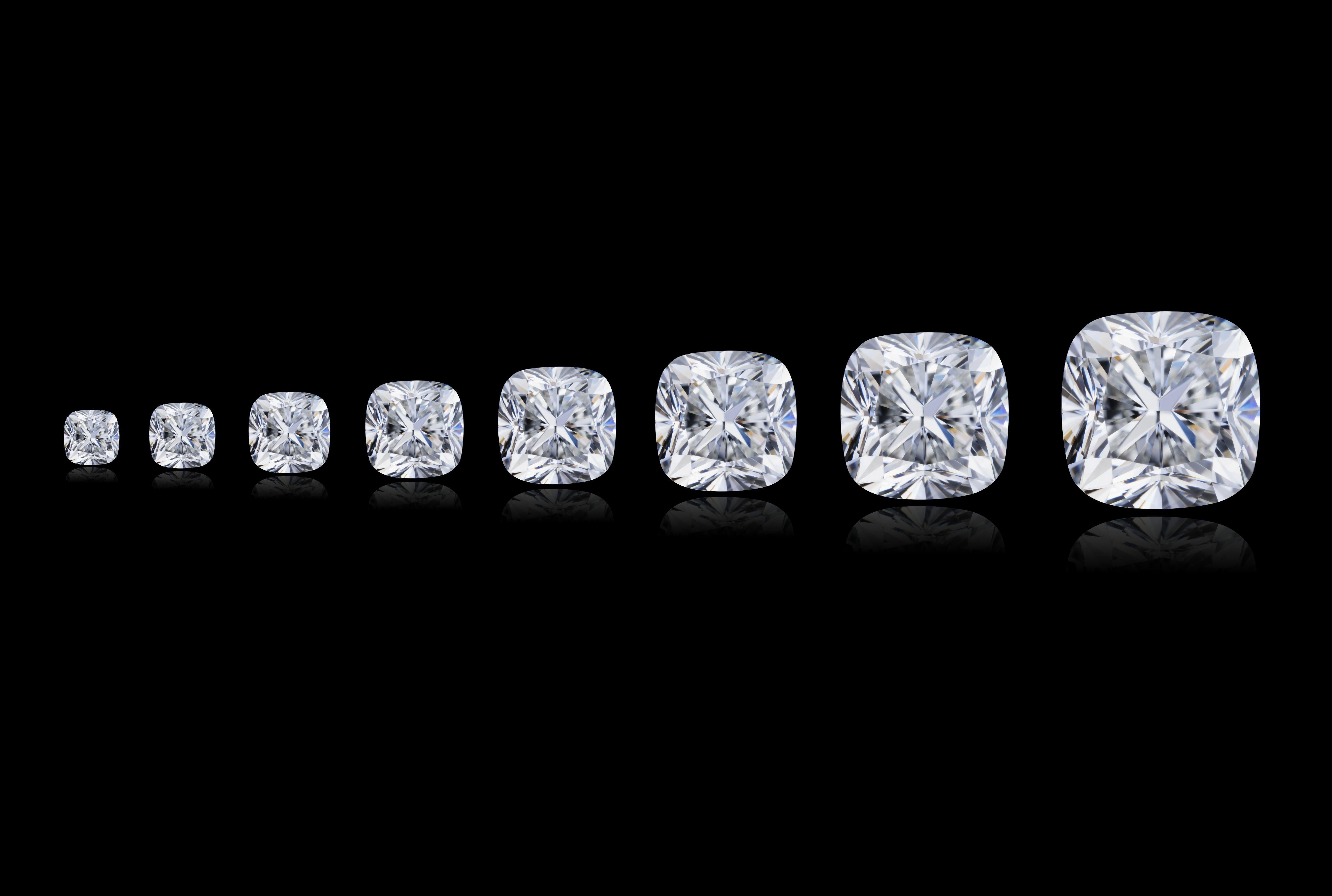
What are Cushion Shape (Cut) Diamonds and Why Love Them?

Are you looking for a diamond shape or cut that has a dynamic set of characteristics? Are you looking for something that has a warmer look, but still scintillates like a brilliant starry night? Perhaps you are looking for softer edges and an elegant, bright gleam? Cushion diamonds might be just right for you.
Cushion-shaped diamonds are on a popularity rise, again. They were one of the most common and sought-after cuts in the late 19th and early 20th century, with many famous diamonds in their ranks. One of the most famous diamonds in the world, the magnificent Hope Diamond, is a cushion cut stone. While they lost out for a while to round brilliant diamonds which were developed in the 20th century, their romantic balance of classic warmth and brightness, with modern mesmerizing scintillation and fire make these stones a very popular choice today.
What Are Cushion Shape Diamonds?
Also sometimes called Pillow shaped, or Pillow cut, they can be equal on each side, more or less square, or elongated and more or less rectangular.
Their sides tend to be at least slightly curved, if not quite rounded with no angles whatsoever, or very, very modest ones. Very occasionally, this is so to the extreme that they appear more like a round cut than a square cut.
They have round or slightly pointy corners, but never the sharp angles of a princess, or cropped look of radiant or emerald shapes.
Faceting
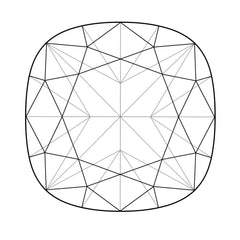
Cushion cuts typically have 54-68 facets, and are most often cut with 4 to 8 mains, the kite-shaped facets between the culet and the girdle on the underbelly of the stone. When more are added on we generally begin to distinguish them from normal cushion cuts, calling them “Modified Cushion Cut Diamonds.”
History
Cushion cuts largely developed as cutters attempted to generate less waste and produce more scintillating light from the stones they had available. They are derived from the Old Mine Cut, but are less chunky than their predecessors, with a more splintery look, though not to the extent of some other brilliant cuts.
How to choose a cushion cut:
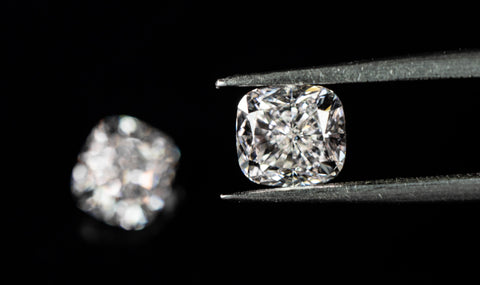
Unlike round diamonds, there is no cut grade given by most reputable evaluating labs. However, the quality of the cut can still be determined by understanding some of the parts of the grading report you must receive with your diamond. If there is no report for the diamond, just don’t buy it. That's a hard limit. The following are some basic guidelines for choosing quality cushion cut diamonds.
Excellent cut stones:
- Table 60-65%
- Depth 65-69%
- Perfect or at least eye-perfect symmetry along all axises.
- Length to width: 1.0-1.05*
- A thin to slightly thick girdle
- An unfaceted culet
Good cuts:
- Table: 57-69%
- Depth: 62-71%
- Perfect or near perfect eye symmetry along all axises.
- Length to width ratio: 1.06- 1.19*
- A thin to the slightly thick girdle.
- Minimally faceted or unfaceted culet.
You might notice that these proportions seem a lot higher than they do for round brilliant diamonds. That is perfectly normal, as it is a reflection of the nature of the different facet structures of a cushion versus a round brilliant diamond.
*The length-to-width ratios above are for regular cushion cuts, not elongated cushion cuts because a stone with a more equal ratio will have better brilliance, fire, and scintillation. That being said, an elongated cushion will have a great deal of warmth and character, and its length may seem more attractive and make fingers appear more slender.
The number one, most important part of choosing a cushion cut diamond is making sure its outline is at least symmetrical to the eye, preferably across two planes. Imagine an X across the table- the top, flat surface of the diamond- and if each segment is symmetrical, mirroring its neighbor, you’re already close to picking a winner. If it is symmetrical only across one plane, they can still make magnificent works of unique art, and may be well suited as accent stones, but may not be suited for every setting style or for the piece you envision, especially if being used for a center stone in an engagement ring. That being said, an asymmetrical cushion cut can make a big, bold statement.
If you are able to view the stone in person, turn it over and take a look at the facets between the girdle and the culet to make sure that the mains are also symmetrical and well proportioned. They should all be the relative same shape and equally distanced from each other.
Check the girdle. Cushion shapes girdles can vary greatly in thickness, and generally, the girdle at the corners will be thicker than in between them. This can sometimes create the potential for damage, especially chipped corners or fractures if the girdle is too thin. Choose a cushion cut diamond with a slightly thicker girdle if you want to set it in prongs, and use a bezel or flush setting if it is on the thin side.
Don’t expect the glitter and scintillation of a round brilliant cut. Cushions, while still counting in the brilliant-cut family, have more brightness and warmth than they do sparkles.
Why get a cushion cut?
What makes cushion cuts so special is that they balance brilliant scintillation and warmth better than round cuts, and have a softer appearance than most diamond cuts. This adds greatly to their romantic, sensual appeal.
In engagement rings cushion cut diamonds have a timeless look, which is popular now, as it has been before, and will be again, no doubt. They have a versatile look- seeming more square or round based on the cut, but also based on the setting.
They are easy to pair with other shapes because of the almost chameleon-like dual nature of being both rounded and squared at the same time. They sit very well in a pave halo, which can add scintillation and make the stone seem larger.
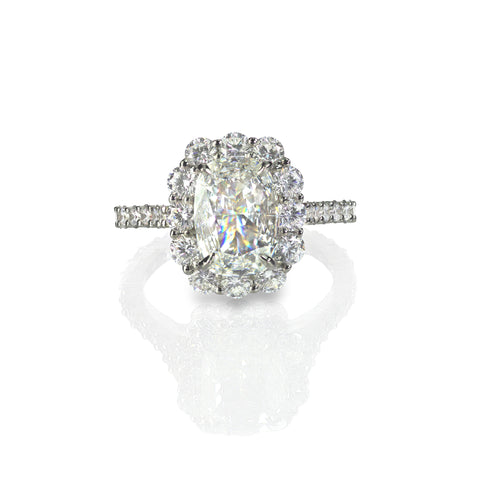
Michael Gabriels Cushion Cuts
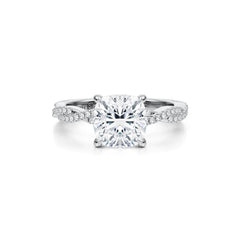
At Michael Gabriels we have excellent cushion cut diamonds, all sustainably grown as opposed to mined. In our process, you choose the basic requirements of the stone you want, and our experts, with over 100 years of experience in this third-generation family business, choose the best stone that meets those criteria, saving you time and energy and ensuring you get the best quality stone available.
We use only lab-grown diamonds and recycled metals in order to maintain a sustainable and ethical business, doing our part not only to make sure you find your perfect stone, but also to make sure you have more time and better world circumstances in which to enjoy it.
If you are interested, please contact us and we will be happy to get started finding you your perfect diamond, and custom designing a setting in which you can exhibit it to your heart's desire.

